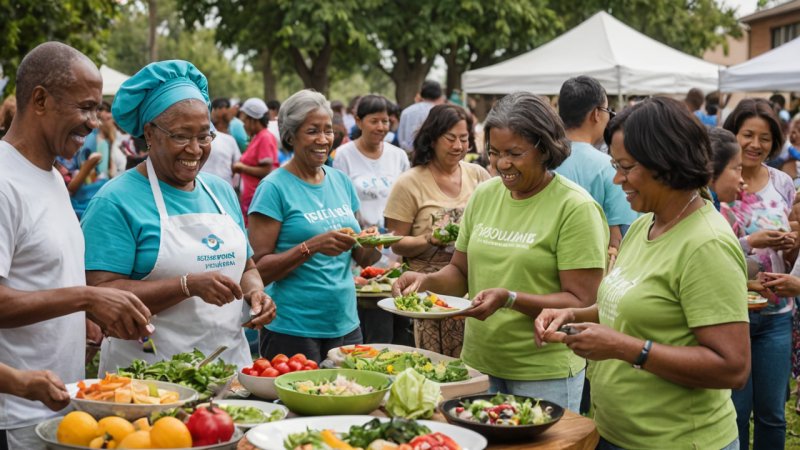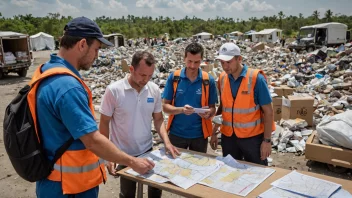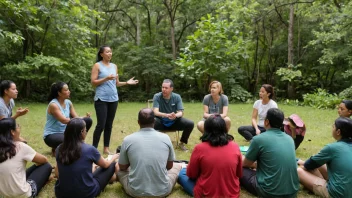In an increasingly interconnected world, the health of a community is more crucial than ever. Community health encompasses the physical, mental, and social well-being of individuals living in a shared environment. It reflects not only the absence of illness but also the presence of resources, opportunities, and support systems that promote health and wellness. As communities face challenges such as rising healthcare costs, environmental concerns, and social inequalities, it's vital to harness strategies that foster a culture of health. This article delves into effective strategies for promoting community health, exploring initiatives that empower individuals, strengthen social ties, and enhance overall well-being.
Fostering Health Education
Education is a powerful tool in promoting community health. By providing information on healthy lifestyles, preventive care, and the importance of regular health check-ups, communities can empower individuals to make informed decisions. Health education can take various forms, including workshops, seminars, and informational materials distributed through local organizations. Schools can also play a pivotal role by incorporating health education into their curricula, teaching children about nutrition, physical activity, and mental health from a young age.
Encouraging Physical Activity
Physical activity is essential for maintaining physical and mental health. Communities can promote active lifestyles by creating safe and accessible spaces for exercise, such as parks, walking trails, and recreational facilities. Organizing community events like fun runs, sports leagues, or yoga in the park can also motivate individuals to engage in physical activity. Furthermore, local governments can implement policies that encourage walking and cycling, such as bike lanes and pedestrian-friendly streets.
Building Social Connections
Social support plays a significant role in health outcomes. Communities that foster strong social connections can help individuals feel more supported and less isolated, which can lead to better mental health. Initiatives that promote social interaction, such as community centers, support groups, and volunteer opportunities, can enhance social ties. Additionally, neighborhood events, potlucks, and cultural festivals can encourage residents to come together, share experiences, and build a sense of belonging.
Access to Healthcare Services
Ensuring that community members have access to healthcare services is a fundamental aspect of promoting health. This can include establishing free clinics, mobile health units, or telehealth services that cater to underserved populations. Community health workers can bridge the gap between healthcare providers and residents, offering support, education, and navigation through the healthcare system. By raising awareness about available resources, communities can improve access to preventive care, screenings, and vaccinations.
Addressing Mental Health Needs
Mental health is an integral part of overall well-being, yet it often remains overlooked. Communities must prioritize mental health initiatives by providing access to counseling services, support groups, and mental health education. Reducing the stigma surrounding mental health through awareness campaigns can encourage individuals to seek help when needed. Furthermore, incorporating mental health resources into existing community programs can ensure that mental well-being is treated with the same importance as physical health.
Creating Healthy Environments
The environment in which individuals live significantly impacts their health. Communities can promote health by advocating for clean air and water, access to nutritious food, and safe housing. Initiatives such as community gardens can provide fresh produce, while policies that limit pollution and promote sustainable practices can lead to healthier living conditions. Additionally, educating residents on environmental health issues can empower them to take action in their local areas.
Encouraging Healthy Nutrition
Access to nutritious food is a cornerstone of community health. Initiatives that promote healthy eating, such as farmers' markets, nutrition workshops, and cooking classes, can help residents make healthier choices. Collaborating with local food banks and organizations to provide resources for low-income families can also alleviate food insecurity. Furthermore, schools can implement programs that emphasize the importance of nutrition and healthy eating habits in their lunch programs.
Utilizing Technology for Health Promotion
In today's digital age, technology can serve as a powerful ally in promoting community health. Mobile apps, websites, and social media platforms can disseminate health information, connect individuals with resources, and facilitate virtual support groups. Online health challenges and fitness competitions can motivate community members to engage in healthy behaviors. Additionally, telemedicine can improve access to healthcare for those who may have difficulties reaching traditional medical facilities.
Engaging in Policy Advocacy
Advocating for health-promoting policies at local, state, and national levels is essential for creating sustainable change. Community members can come together to voice their needs and concerns, influencing policies that affect their health. This can include advocating for better access to healthcare, improved public transportation, and policies that address social determinants of health such as housing and education. By participating in advocacy efforts, individuals can amplify their voices and work towards a healthier community for all.
Conclusion
Promoting community health is a multifaceted endeavor that requires collaboration, education, and commitment. By implementing strategies that focus on health education, physical activity, social connections, access to healthcare, mental health support, environmental health, nutrition, technology, and policy advocacy, communities can create an environment that fosters well-being for all its members. Everyone has a role to play in this process, and through collective efforts, we can build healthier, happier communities that thrive together.






